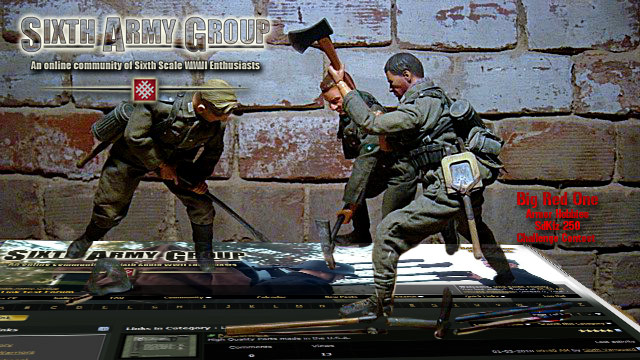panzerwerk
Administrator
these questions were asked in another thread , and would love your input Mr Volstad .
1) Who and what purpose was the vest made for? It couldn't have been Ranger exclusive as I've read here and elsewhere that the 29th Infantry also wore it on D-day, and what purpose in mind was it made for?
2) Were there any "official" regulations on what went into each pouch? Like, a pouch for grenades, one for clips/magazines, one for medical supplies, etc. I know there is a place for the E-tool and the bayonet. Were these regulations followed, or did the soldiers who wore them pretty much put what they felt was neccessary for them to fight?
3) How long was it worn, and how common were they? I've read somewhere that they were discarded soon after D-day for whatever reasons. Is this true, or were there enough troopers who held onto their vests? Was the vest a common sight among the Rangers, or whoever else wore them, or was it uncommon? Or is it in reality rare, only us 1/6th guys are infatuated with them?
4) The DML Ranger fig, Captain Miller, is wearing his belt and gear under the vest. The bbi fig, Hoppy Bell, is wearing his cartridge belt over the vest. Which is correct, or was it preference?
5) Finally, did they see use in the PTO, or were they a ETO thing?
1) Who and what purpose was the vest made for? It couldn't have been Ranger exclusive as I've read here and elsewhere that the 29th Infantry also wore it on D-day, and what purpose in mind was it made for?
2) Were there any "official" regulations on what went into each pouch? Like, a pouch for grenades, one for clips/magazines, one for medical supplies, etc. I know there is a place for the E-tool and the bayonet. Were these regulations followed, or did the soldiers who wore them pretty much put what they felt was neccessary for them to fight?
3) How long was it worn, and how common were they? I've read somewhere that they were discarded soon after D-day for whatever reasons. Is this true, or were there enough troopers who held onto their vests? Was the vest a common sight among the Rangers, or whoever else wore them, or was it uncommon? Or is it in reality rare, only us 1/6th guys are infatuated with them?
4) The DML Ranger fig, Captain Miller, is wearing his belt and gear under the vest. The bbi fig, Hoppy Bell, is wearing his cartridge belt over the vest. Which is correct, or was it preference?
5) Finally, did they see use in the PTO, or were they a ETO thing?

